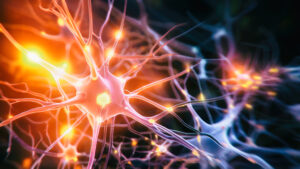Brain stimulation study seeks participants with Alzheimer’s disease
A new study is using small amounts of electricity to stimulate the brain in people with mild cognitive impairment or Alzheimer’s disease. The aim is to see if this can help keep the part of the brain which is responsible for memory active, whilst delaying symptoms of Alzheimer’s disease.
The ‘Causal role of neural activity in neurodegeneration’ study is seeking volunteers with a diagnosis of mild cognitive impairment of Alzheimer’s disease.
The study is led by Imperial College London, with funding from the UK Dementia Research Institute and US Alzheimer’s Association. It is recruiting participants through Join Dementia Research until March 2026.
What is the purpose of this study?
One of the earliest signs of Alzheimer’s disease is changes to the hippocampus. This is a part of the brain which helps to form memories, navigate and learn new information.
The study will assess the effects of temporal interference stimulation on the brain activity in adults with Alzheimer’s disease.
Temporal interference involves administering multiple electrical fields into the brain. This can enhance brain activity by helping to send messages to different parts of the brain, similar to how natural electrical signals do in a healthy brain.
This method has been trialled with healthy participants and researchers now want to discover whether it is an effective treatment for Alzheimer’s disease.
If successful, this would suggest that normal brain activity in the hippocampus can be resumed, which will hopefully slow the progression of the disease.
Alternative methods of treating Alzheimer’s disease
Dr Nir Grossman, the study’s chief investigator, explains: “Whilst there is currently a lot of talk about drug trials for Alzheimer’s disease, it is important to explore other avenues for treating this increasingly common disease.
“Temporal interference works by applying multiple electric fields to the brain with slightly different frequencies. These fields interfere with each other in a way that creates a restricted pattern of stimulation, which targets specific areas of the brain – in this case, the hippocampus. We hope that this will mimic the neuroelectronic function in a healthy brain and help keep the brain healthy in people with Alzheimer’s disease.”
What does the study involve?
Participants are randomly allocated into two groups. The first receive temporal interference and the second receive a ‘sham’ treatment where no electricity is administered. This is to compare those who have had the treatment with those who have no. Neither the researcher nor the participant are told which they will have, to avoid bias.
The study involves 16 visits to the Imperial College Clinical Research Facility. First, they have 14 daily visits in which participants will receive temporal inference or the ‘sham’ treatment. They will then have follow up visits after 1 and 4 weeks.
Up to 48 participants from the London region are invited to take part in the study.
During study visits, researchers attach 4 electrodes to the participants’ head to administer the brain stimulation. A separate machine is also used to record brain activity.
During the brain stimulation, which lasts 45 minutes and is conducted twice per day, participants are asked to complete tasks designed to assess memory. This is so the effectiveness of the stimulation can be accurately recorded.
To find out if you are eligible to take part in a dementia study, sign in to your Join Dementia Research account or, if you are not already registered, sign up today.
